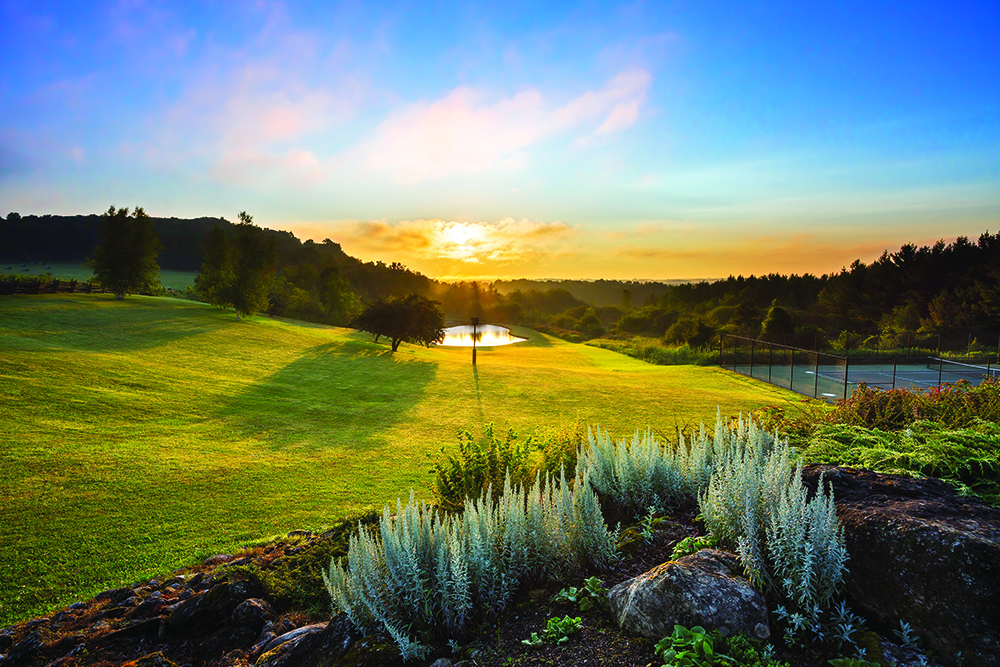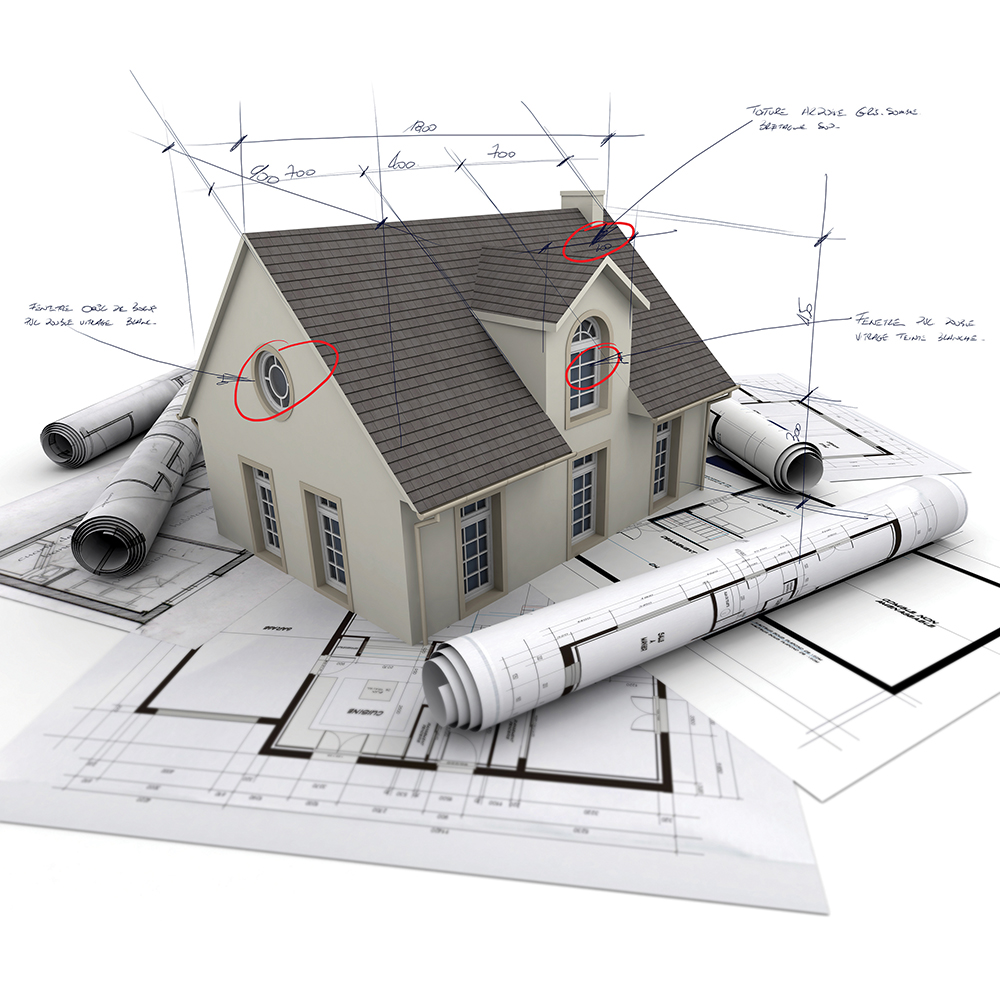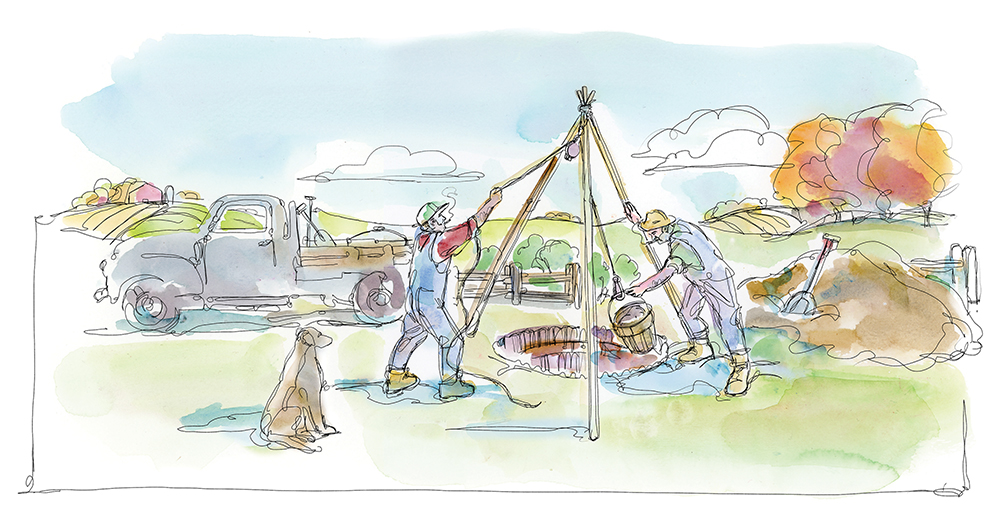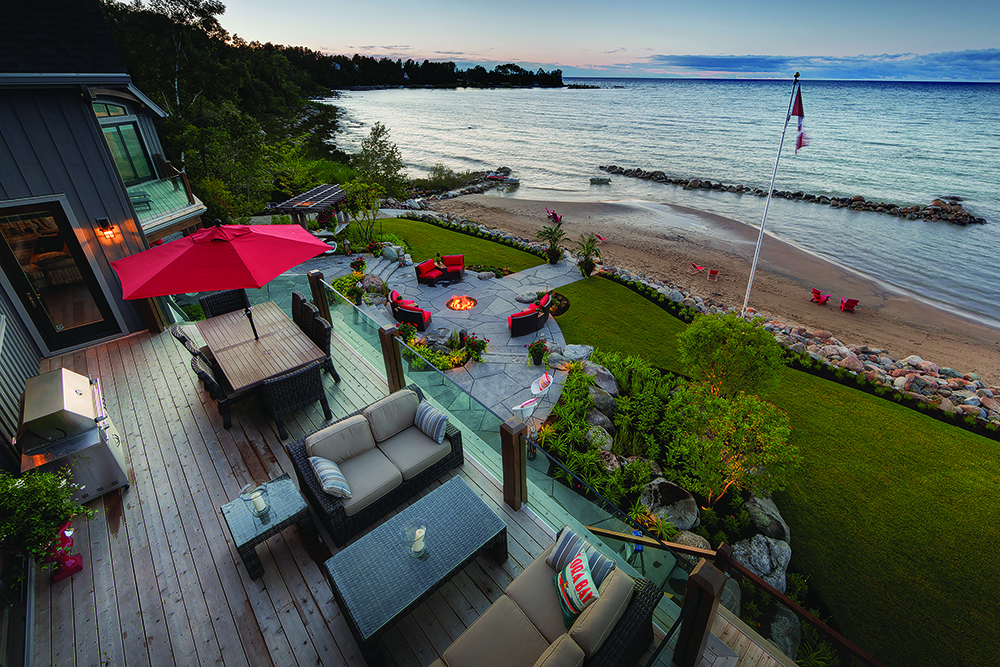Key considerations when building on a rural property
story by Janet Lees ❧ illustration by Robert Carter
Owning some acreage and building a country home is the dream of many who flee the city to enjoy life in Southern Georgian Bay. “Property with views of the lake are in high demand,” says Todd Brooker, a real estate agent with Re/Max Four Seasons Realty. “Likewise are old farm properties with tree-lined laneways, rolling hills of pastures and forests.”
When people initially think of owning an acreage property, what comes to mind is an idealized vision of rural life, but there is plenty to consider when choosing a country property. Following are some key points to keep in mind when planning the site plan and construction.
Access
“My last driveway was 3,300 feet long, so I love long driveways that access the best views on the property,” says Brooker. “But they are expensive to build and to maintain. Building a proper, enduring laneway is imperative.”
A bulldozer or any big machine will cost you $1,000 per day, plus trucking to get the machine to your property, notes Brooker. “For some days during construction, you will need two machines to work in unison.
A load of gravel will cost you about $500 per truck, [so] a one thousand foot driveway might cost you $25,000 depending on the degree of contouring your property needs.”
A culvert and roadside access requires a municipal permit and inspection. “A good raised driveway with adequate ditching on both sides will provide the longest-lasting level surface, which will shed water in the spring and fall and alleviate drifting snow in the winter,” says Brooker.
Hydro
Solar and wind power are great ideas for new builds, but if you’re bringing in standard hydro, consider the following:
- Hydro on poles requires a clearing of 24 feet (12 feet minimum on each side of the line).
- If you have forest between your building location and the last pole at the road, you may not have a desired routing for the line without losing trees.
- If you bury hydro underground, the necessary cable will cost a minimum of $25 per metre plus ditching to bring from the last pole to your house.
“To save money, you might be able to bring the hydro in on poles part way to the site, then bury the remainder to the house,” suggests Brooker. “In any case, a one-thousand-foot run to the house, plus transformer box, machine work, etc, may cost $20,000.”
Water
A primary consideration for your new build is water supply.
“Because of the heavy clay soil, many areas of our region have little water, or poor hard water, red with iron produced from deep wells,” explains Brooker. But there is an upside to clay: it is the perfect material for crafting a pond, lining the banks and moulding the landscape.
“If you have a location suitable for constructing a pond, the material you take out will make for great fill to build up areas around the house or on the property,” he advises. “And a healthy pond will make a great water supply for every use in your home and barn, for your animals and for swimming. Pond water is easy to treat for residential purposes with a UV light and other filters.”
If you are lucky enough to hit springs in the pond, you will have cold water and a supply to keep the pond filled during the evaporation of the summer. “The pond bottom is also the best place to locate the ‘loop’ for a geothermal heating and cooling system, if that is what you are planning to use in your home’s mechanical plan,” notes Brooker. “Pre-planning all of these elements takes time and is the key.”
Planning
Rule number one, according to Brooker: don’t be in a rush to build! “Know your property first. Take a couple of lawn chairs and go sit at your building site – in the morning, at mid-day and in the evening. You might first focus on the view, but never turn your back on the rest of the sites of the property. Document the exposure of the sun and the shadows, the direction of the wind and how those integrate with the view.”
When you start formulating your plan, hammer some stakes into the ground and run some orange tape to show the location of the house. Then sit and enjoy. “I highly recommend that you do the same routine for a full winter as well, documenting the drifting snow banks and the changing views without summer leaves,” says Brooker. “Don’t pull the trigger on the design of your building or your site plan until you’ve had a good opportunity to first find out how you want to live on and use the property.”
Unlike the cost of building a driveway or bringing in hydro, the important work of observation and site planning doesn’t cost you anything but will increase the value of your property if done wisely.
Keep these tips in mind when looking for your dream property and building your rural estate, and soon you will be enjoying life in the country.
Read More about Real Estate in this Issue
– Real Estate Q&A
– The Game Has Changed!
– Sell, Sell, Sell!
– Ready, Set, List!
– Buying Strategies
– The Best Bidder
– Going to the Country?
– Thinking of Investing in Real Estate?















